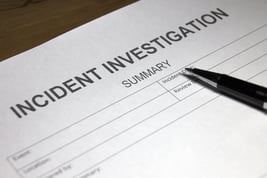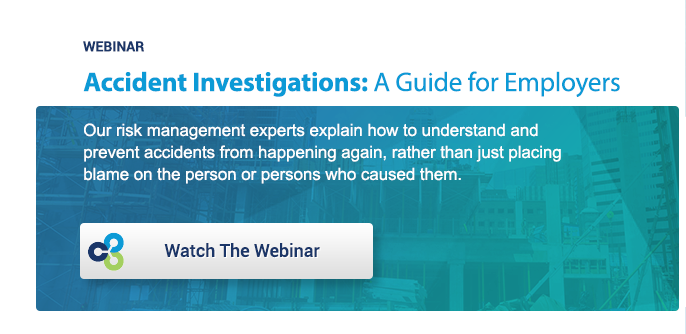 There’s been an accident on the job, now what? Our risk management experts explain how to understand and prevent accidents from happening again, rather than just placing blame on the person or persons who caused them. Identifying the basic cause of the accident is only the starting point. The long-term goal is to make effective changes and corrections. When investigating an accident, there are four steps to remember:
There’s been an accident on the job, now what? Our risk management experts explain how to understand and prevent accidents from happening again, rather than just placing blame on the person or persons who caused them. Identifying the basic cause of the accident is only the starting point. The long-term goal is to make effective changes and corrections. When investigating an accident, there are four steps to remember:
- Gather facts
- Analyze facts
- Implement corrective measures
- Monitor follow-up
Gathering the facts is as basic as it sounds: who, what, where, when and why? Who was injured? Who saw it happen? Who had assigned the injured person to the task in the first place? Who else was involved? What were the injuries? What tools was the person using? What protective equipment was being used or should have been used? When was the person assigned to this task? Why did the person do what he/she did? Why weren’t specific instructions issued? Where did the accident occur? Where was the supervisor at the time?
Once you know the facts, the next step is analyzing them. This helps you get to the root cause of the accident. The main cause of the accident can usually be attributed to a number of things including: the condition of the equipment, the environment, whether procedures were followed, whether protective equipment was worn as it should have been, or whether the injured employee was trained properly. Using the “Five Whys” may help you come to some conclusions.
Example: An employee is injured tripping on a job site.
Why #1: Why did the person trip?
Answer: They stepped on a pallet.
Why #2: Why was the pallet left in the walkway?
Answer: It was left there by another employee
Why #3: Why did the other employee leave it there?
Answer: He/She didn’t know the correct place to put it.
Why #4: Why wasn’t the employee instructed on the correct place to store the pallet?
Answer: There really isn’t a specific area designated for empty pallets.
Why #5: Why is there not a designated space for empty pallets?
Answer: There is no room on the loading dock.
From here, you can take corrective actions. This is an example of how an accident leads to something productive when an accident investigation is done correctly. The final step is monitoring the changes you put in place because of an accident. Document the plan and follow-up to see how it’s holding up.
Our webinar will cover the following things in depth:
- Principles of accident investigations
- Establishing an incident program
- Conducting an accident investigation
- Preventing an incident from happening again











